This article was co-authored by Diana Lee, MD. Dr. Diana Lee is a Surgical Retina Fellow. She received her MD from Georgetown University in 2015, did her fellowship at UCLA's Jules Stein Eye Institute, and completed her first residency at USC's Roski Eye Institute. Currently, she is a resident at the Los Angeles County Department of Health Services and a clinical fellow with Associates in Ophthalmology. Her research interests are diverse and include: cataract surgery, dry eye, thyroid eye disease, retinoblastoma and diabetic retinopathy.
There are 11 references cited in this article, which can be found at the bottom of the page.
This article has been viewed 139,079 times.
Allergic reactions to cats and other pets can vary in severity and from child to child. Whether you already have a cat, you plan on getting a cat, or you simply want to visit friends or family members who own cats with your child for the first time, it is important to know whether or not your child is allergic to cats. Identifying allergy symptoms in a child can be difficult from time to time, but keeping a watchful eye on your child's reaction to a new animal is critical to keeping your family healthy and happy. Even if your child does have an allergy, there are steps you can take to avoid having to rehouse your cat.
Steps
Testing for Allergies
-
1Place your child around cats in temporary situations. Go to a friend or family member's house where you know a cat is living and get the child to interact with the cat. This way, you can watch for signs of a cat allergy.
- Be aware that cat allergies can arise from contact with the skin, fur, dander, saliva and urine of the animal.
- It is important to note here that you should not try exposing your child to cats, or any animals, without knowing if they do or don’t have an allergy if your child suffers from asthma. Simple allergic symptoms can trigger potentially deadly asthma episodes.[1]
-
2Observe your child. If your child shows any of the following symptoms, he may be allergic to cats:
- Excessive coughing, wheezing or sneezing
- Gets hives or a rash on the chest and face
- Has red or itchy eyes
- Redness on a spot of skin where the child was scratched, bitten, or licked
Advertisement -
3Listen to your child. If your child complains about any of the following symptoms while exposed to the cat, your child may have a cat allergy:
- Itchy eyes
- A stuffy, itchy, or runny nose
- Itchy skin or hives where the cat touched the child
-
4Remove your child from the allergen. If you do notice any of the above symptoms in your child, it is important to remove her from contact with the cat until you have devised a plan to lessen or eliminate the symptoms of her allergies.
-
5Have an allergist test your child. Observational and anecdotal evidence may be enough to determine a cat allergy in a child. However, you will want to visit the doctor and get an allergy test. Keep in mind, though, they aren't always accurate, so if your child tests negative, you should still observe the child for signs of allergies when he is exposed to a cat.[2]
-
6Spot more severe allergies. Most allergic reactions are limited to redness, itching, hives and nose stuffiness, but signs of more severe allergic reactions may become apparent when exposing your child to a cat. Swelling of the throat can occur in severe allergic reactions, which can lead to the constriction of airways. If this happens, get your child to a medical professional immediately and do not expose them to any more cats in the future.[3]
Controlling Cat Allergy Symptoms with Medication
-
1Note whether your child experiences a mild or severe allergy. If your child’s allergy symptoms are mild, you can probably control them with over-the-counter medication and proper sanitation around your house. If the symptoms are severe, such as breaking out in body-wide hives, or swelling of the throat or other airways, you will need to ensure your child is no longer exposed to cats.
- If you already have a cat and find out that your child is severely allergic, you will likely need to rehouse your cat.
-
2Use antihistamines. Antihistamines are designed to reduce the production of an immune system chemical that is responsible for causing the symptoms associated with allergies. They also help relieve itching, sneezing and runny nose. You can purchase these medications over-the-counter or acquire them with a prescription. [4]
- Antihistamines come in pill form, as nasal sprays or in syrups, which are specifically designed for children.
- Never give over-the-counter or prescription allergy medications to children two years of age or younger unless directed by a doctor or medical professional.[5]
-
3Use decongestants. Decongestants work by shrinking swollen tissues in your nasal passages, making it easier to breathe through your nose.[6]
- Some over-the-counter allergy tablets combine an antihistamine with a decongestant.
- Never give over-the-counter or prescription allergy medications to children two years of age or younger unless directed by a doctor or medical professional.[7]
-
4Get your child allergy shots. These shots, usually administered once or twice a week by an allergist, can help a child overcome the symptoms of allergies that can’t be controlled with either antihistamines or decongestants. Allergy shots "train" your immune system by desensitizing it to specific allergens. This is typically called immunotherapy. The initial shots expose you to very small doses of the allergen, in this case, the cat protein that causes an allergic reaction. The dose is, “gradually increased, usually during a three- to six-month period. Maintenance shots are needed every four weeks for three to five years.” [8]
- Also, be sure to ask your doctor or allergist about age and dosage restrictions as they may apply to your child. [9]
-
5Pair medication with other preventative measures. While also continuing a regimen of allergy medications, it is important to also follow the steps listed below, under “Controlling Cat Allergies with Preventative Measures,” to ensure you minimize the symptoms of your child’s allergy to cats.[10]
-
6Monitor the medication’s effectiveness. Once you have found the proper dosage and type of medication for your child, monitor its effectiveness over time. People have a tendency to build up an immunity to the active ingredients in allergy medication, which ultimately minimizes their effectiveness. If you see this occurring in your child, you will likely have to change the dosage or type of allergy medication he or she is taking.[11]
Controlling Cat Allergies with Preventative Measures
-
1Reduce exposure to cats. As obvious as this sounds, removing exposure or limiting the amount of time your child is exposed to cats will drastically improve their allergy symptoms.[12]
-
2Warn others about your child’s allergies. If you're going to visit someone with a cat, warn the hosts about your child's allergy. Ask them to keep the cat out of the the room where your child will be from now until the end of your visit.
-
3Give your child an allergy medication a few hours before interacting with a cat. If you are taking your child to a house where you know there are cats, give your child an allergy medicine a few hours before exposure. This can minimize his reaction and he won't have to be uncomfortable waiting for the allergy medicine to kick in if he takes when he is already exposed to the cat.
-
4Restrict your cat’s access. Keep your cat out of bedrooms, playpens, off the couch, and generally away from any area where your child spends a lot of time. If you have a finished basement that your child doesn't go into often, keeping the cat segregated in the basement can be viable solution.[13]
-
5Invest in a central air conditioner with an allergen control. Reducing the amount of airborne allergens in your home can go a long way in relieving your child's allergy symptoms. Air conditioners with allergen control filters, such as HEPA filters, successfully reduce the amount of airborne allergens in your home.[14]
-
6Clean often and well. Cat fur and skin can buildup on your couches, in your carpet, on the drapes, and generally anywhere else the cat goes. Invest in a good vacuum cleaner and use it often. Also, use carpet shampoo, de-sanitizing sprays and anti-bacterial wipes often on the surfaces in your home to eliminate any unnecessary allergens left by your cat.[15]
- Cats, by nature, have a tendency to get into, under, and on top of everything in your home. So make sure you pay attention to areas that you wouldn’t usually consider high-traffic, such as behind the couch or under the bed.
-
7Bathe the cat regularly. Bathing your cat regularly can help to reduce the amount of dander and excess fur she leaves around the house. As such, washing your cat is another effective step in combating your child’s allergies.[16]
- It is important to remember that cats don’t like baths, and they naturally do not need them very often. Be sure to check with your vet about safely giving your cat a bath, as bathing her too often can have a negative impact on her physical health.
Warnings
- If you must give up your cat, don't put him/her on the streets or the pound. Take him/her to a no-kill shelter.⧼thumbs_response⧽
- If you attempt to rehouse your cat with a stranger, be wary of that individual’s intentions. Not everyone is a cat lover.⧼thumbs_response⧽
- Children under two years of age should not be given antihistamines or decongestants.⧼thumbs_response⧽
- Be careful with medicines. Talk to your doctor before starting, and get him/her to recommend a good one for your child.⧼thumbs_response⧽
References
- ↑ https://www.healthdirect.gov.au/cat-and-dog-allergy
- ↑ https://www.nhs.uk/conditions/allergies/diagnosis/
- ↑ https://www.nhs.uk/conditions/allergies/symptoms/
- ↑ https://www.aafa.org/allergy-treatments/
- ↑ http://www.fda.gov/Drugs/ResourcesForYou/SpecialFeatures/ucm263948.htm
- ↑ https://www.aafa.org/allergy-treatments/
- ↑ http://www.fda.gov/Drugs/ResourcesForYou/SpecialFeatures/ucm263948.htm
- ↑ https://acaai.org/allergies/management-treatment/allergy-immunotherapy/allergy-shots/
- ↑ http://kidshealth.org/parent/medical/allergies/shots.html#
- ↑ https://acaai.org/allergies/allergic-conditions/pet-allergies/
- ↑ http://www.mayoclinic.org/diseases-conditions/pet-allergy/basics/treatment/con-20028932
- ↑ https://www.healthdirect.gov.au/cat-and-dog-allergy
- ↑ https://acaai.org/allergies/allergic-conditions/pet-allergies/
- ↑ https://www.humanesociety.org/resources/how-live-allergies-and-pets
- ↑ https://health.clevelandclinic.org/how-to-live-with-pet-allergies-if-you-have-no-choice/
- ↑ https://www.humanesociety.org/resources/how-live-allergies-and-pets
About This Article
If you think your child might be allergic to cats, try taking them to a house where you know a cat lives and get the child to interact with the cat so you can watch for signs of an allergy. As they play, watch to see if your child starts coughing, wheezing, or develops a rash or itchy eyes. Since allergies can come from contact with skin, fur, dander, and saliva, look for redness on any spot where your child has touched the cat. If you notice any of these signs, take them away from the cat before their symptoms get any worse. While most allergies show up through mild reactions, watch for any signs of a swollen throat and get your child to an emergency room immediately, since this can lead to airway constriction. For more help from our Medical co-author, like how to control allergy symptoms with medications, read on.
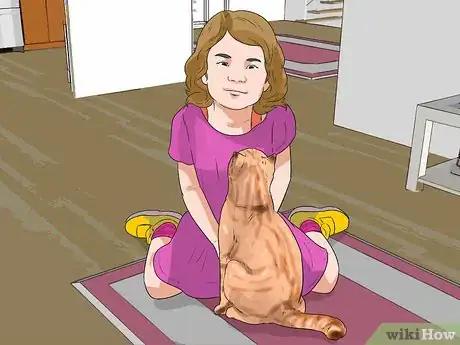
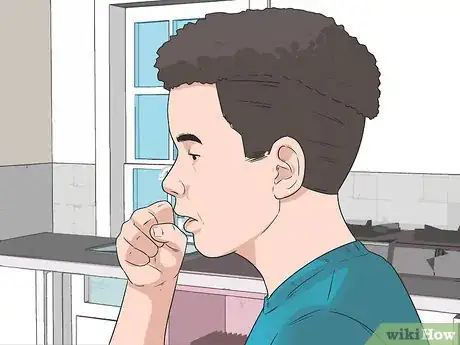
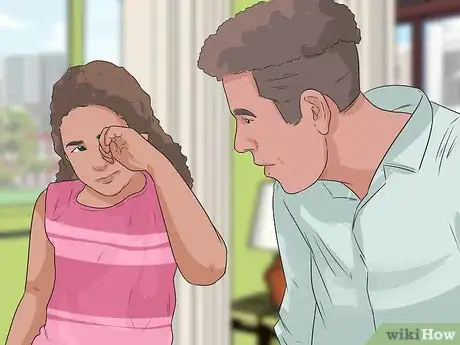
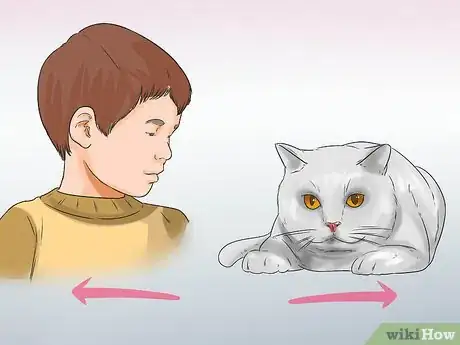
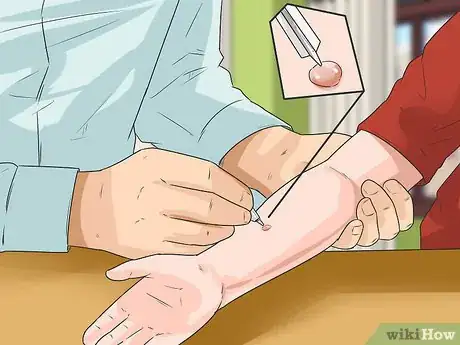
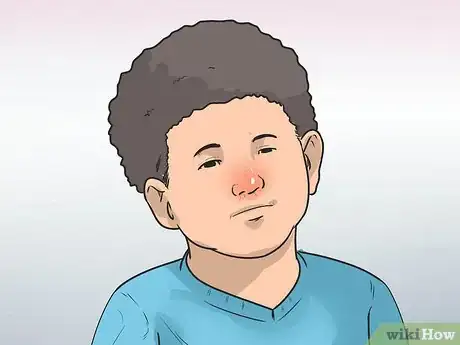
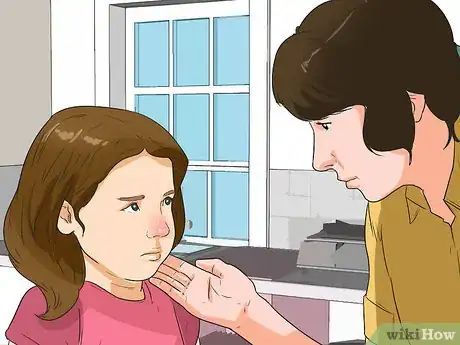


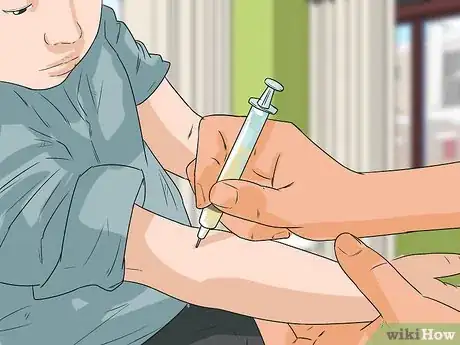
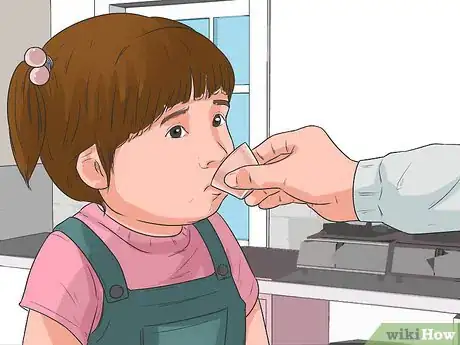

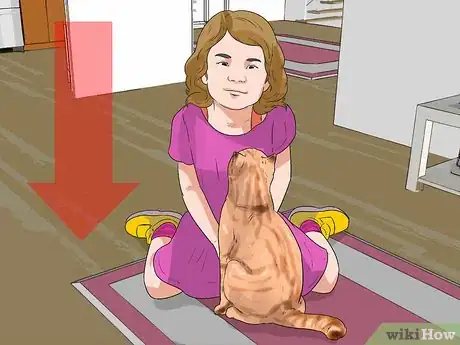
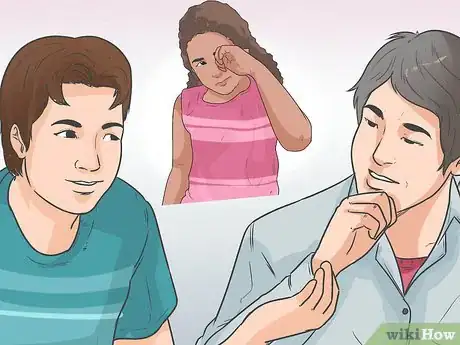
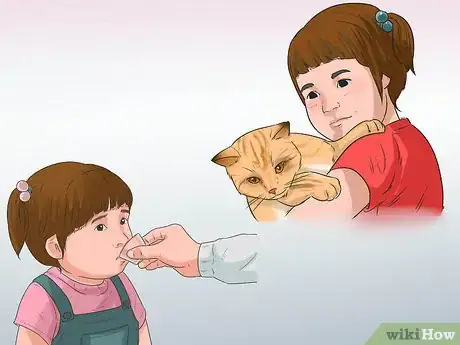
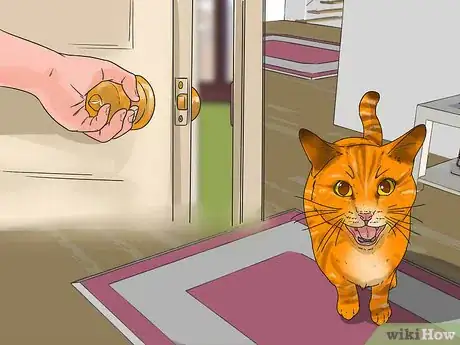

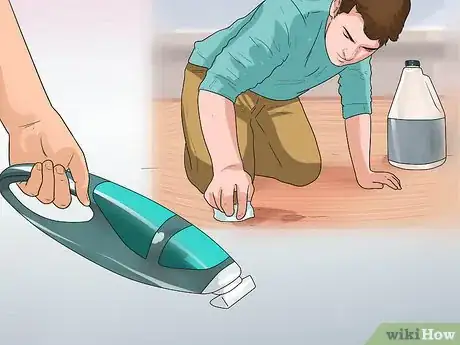
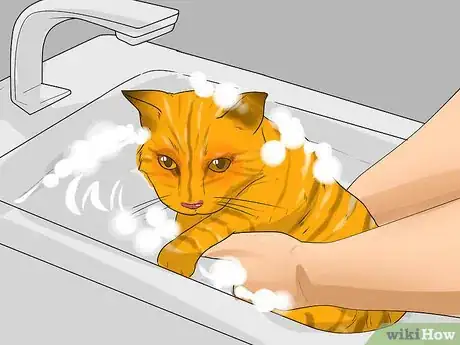


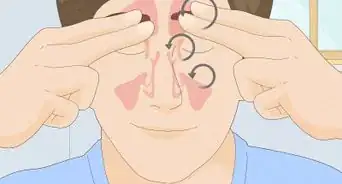

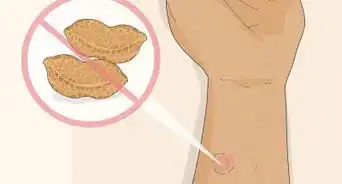





-Step-17-Version-3.webp)














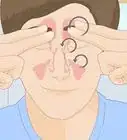




































Medical Disclaimer
The content of this article is not intended to be a substitute for professional medical advice, examination, diagnosis, or treatment. You should always contact your doctor or other qualified healthcare professional before starting, changing, or stopping any kind of health treatment.
Read More...